Death metal helps to inspire land artist
It really is the best therapy, says land artist
- Published
While painstakingly finding and placing stones among the thousands on a west Wales beach, land artist Jon Foreman uses death metal to inspire his work.
Jon, 32, said the pieces he creates can take many hours or, in some cases, days.
"Sometimes you’re fighting the wind, the rain, even the sun," he added.
"Land art can be a bit of a battle."
How Banksy sparked a steel town's love for colour
- Published13 July 2024
Bioluminescent plankton light up the Welsh coast
- Published23 June 2024
He has made thousands of temporary land art pieces around the world, but his favourite place to work has always been near his home - in Milford Haven.
One afternoon, at Freshwater East beach in Pembrokeshire, he talked us through the process while crafting a spiral made from nearby stones.
"It helps you get completely out of things that are going on in your head," he said.
"You’re not thinking about any of the stresses that you’ve got going on because you’re totally immersed in it."
From beaches to forests, Jon also creates sand art and woodland artwork alongside his stone sculptures.
He will find and place every piece of these intricate puzzles using natural materials around him.
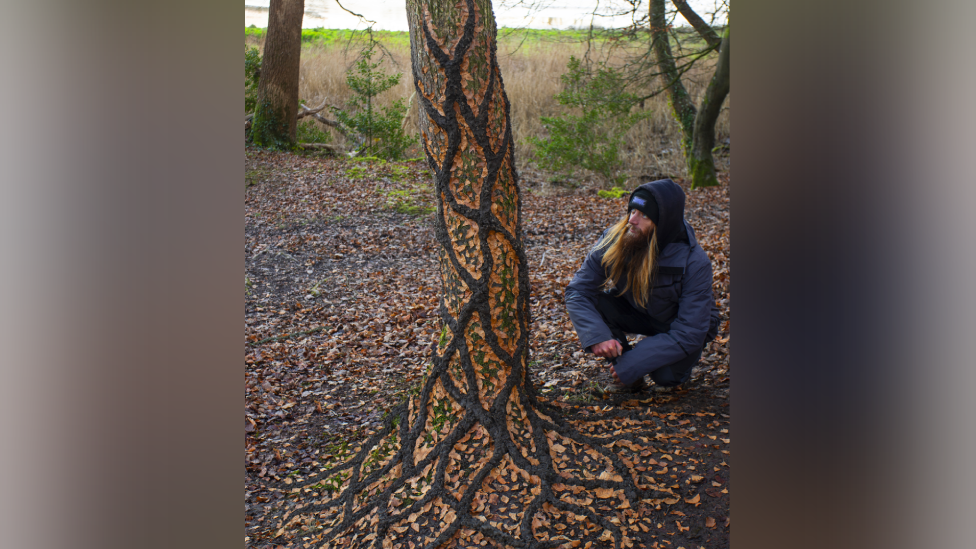
Jon says death metal is what "keeps me going" on the art pieces that take hours or even days
"I don’t have to go chasing materials because they are all around me," he said.
"Living here, it’s got everything nature wise - streams, rivers, woodlands."
With his canvas open to the elements, none of his work is permanent and it’s often lost in less time than it takes to create.
"I’m more than happy to watch it disappear," Jon says.
"That’s all part of it.
"That moment when a wave hits it a piece, if I can capture that, it’s great."
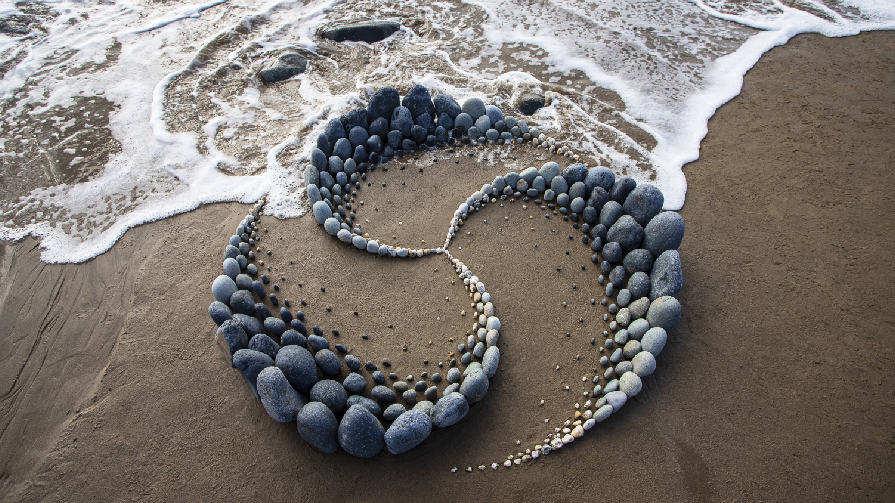
Jon's pieces are temporary but he says he is "more than happy to watch them disappear"
Jon discovered his path to land art while studying at Pembrokeshire College.
He was encouraged to try using different materials, and when he discovered he could use nature, things fell into place.
Often, Jon does not have a set plan or design, but will react to the environment and materials around him.
Jon's love for metal and death metal became a part of his work and also an escape from it.
He said he could list bands forever, but has loved a group called Chimaira the most since his teenage years.
When he's not working outdoors, he spends his spare time as a member of the death metal band Plague Father.
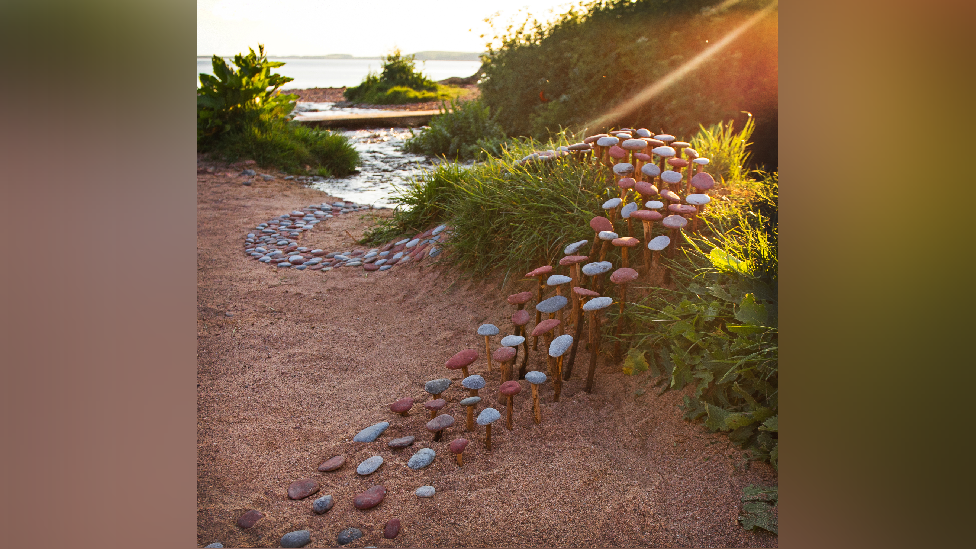
Jon's work has been commissioned by Burberry and used to promote TV series such as House of the Dragon
Social media has been a useful way to document his work and share it with the world.
On Instagram, he now has more than 600,0000 followers., external
His work has even been commissioned by brands such as Burberry, external and used to promote TV series such as House of the Dragon.
"I’ve made work abroad and those opportunities I don’t think would have arisen without social media," he said.
"The presence globally is hard to fathom."
It’s also led to connections and collaborations with land artists outside of Wales, including some as far away as Texas.
But, Jon points out that sharing things online isn’t always positive.
"It’s a blessing and a curse," he said.
"Social media is detrimental to a lot of people’s mental health.
"I would love to think that people who see my work are inspired to take part, more than anything to get them outdoors."
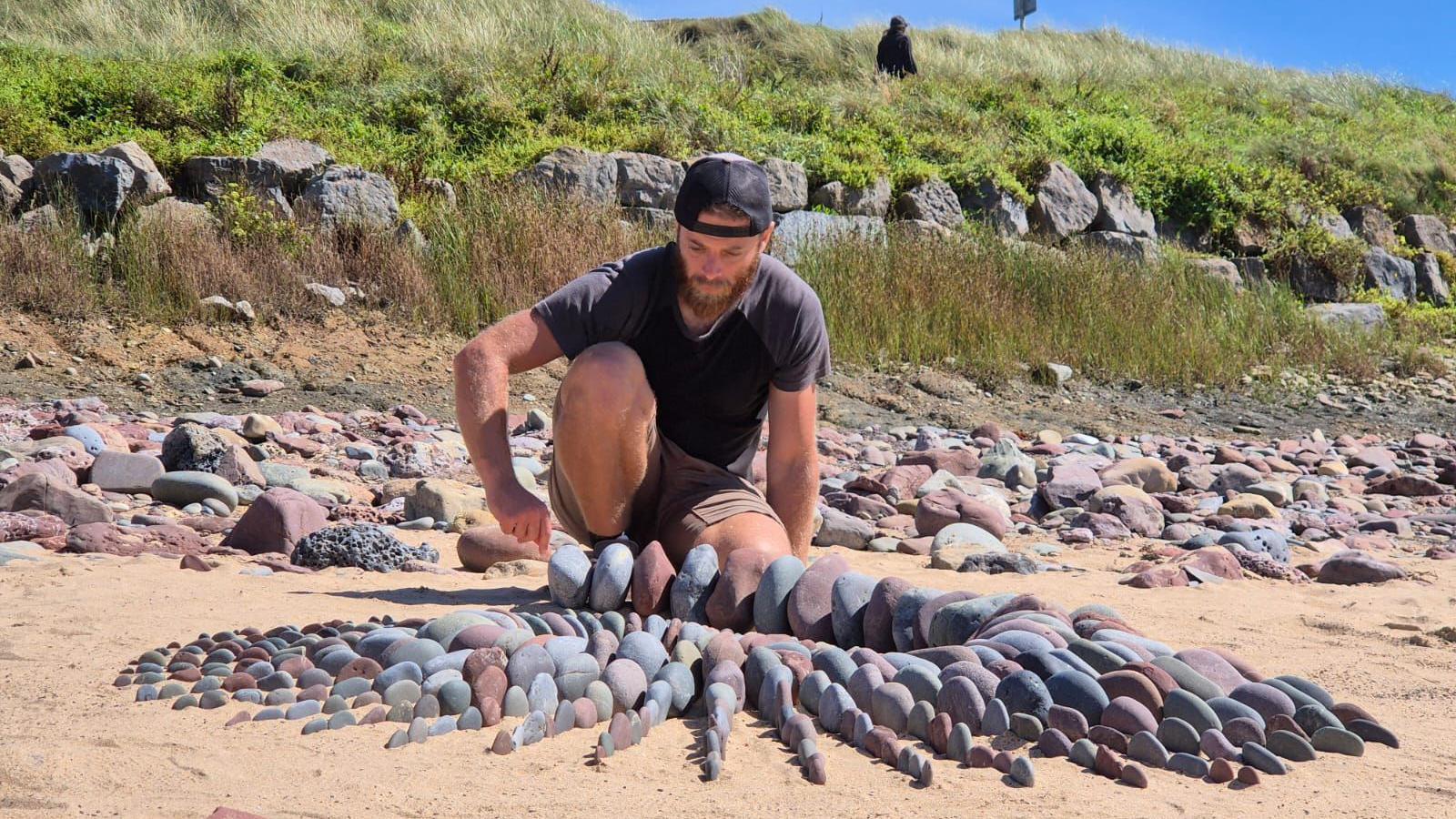
Jon receives a lot of praise online, but some suggest he is interfering with the natural environment
The vast majority of responses to Jon’s work are positive, with some saying that his work is good for their mental health.
"95% or even more of what people write online is good," he said.
"I love to think people actually feel something from it."
But, some, more negative comments, suggest Jon is interfering with the natural environment.
He added: "People think I bring the stones to the beach.
"Can you even imagine that? You’re talking about tonnes of stones.
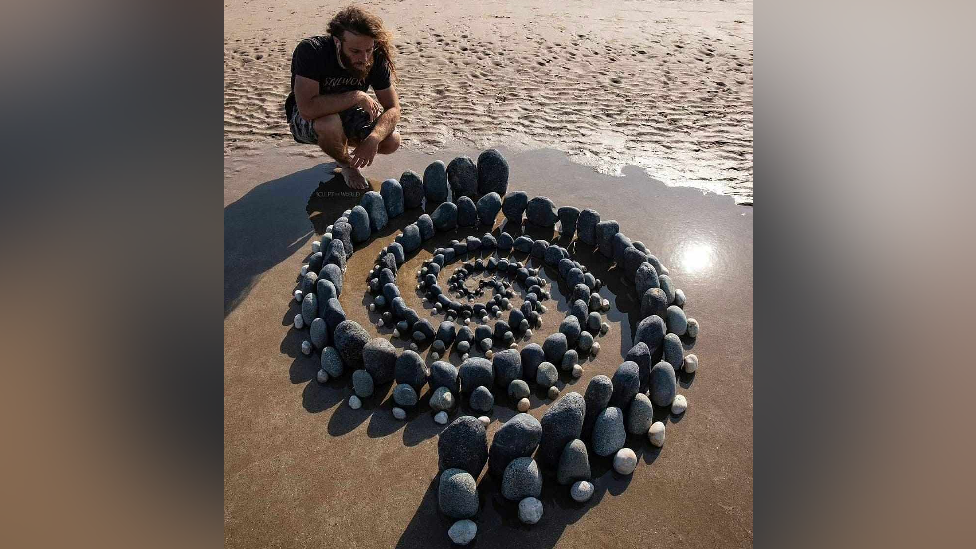
Jon, 32, has made thousands of land art pieces all around the world using stones and other materials
"I think people find it hard to fathom they actually exist on the beach but they really do."
"Land art is about responding to the natural environment and the materials in that."
Despite the challenges, Jon said there was nowhere he would rather be than outdoors creating his art.
"I get to explore, work with new materials, see new places I’d never have seen without this job.
"There’s no reason for me to want to ever leave what I’m doing."
Watch BBC Wales Live on iPlayer for more on this story